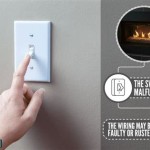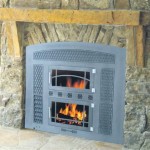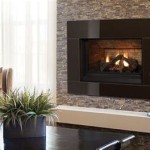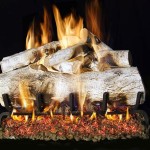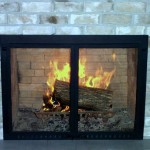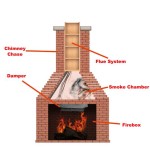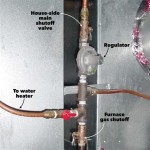Understanding Gas Fireplace Mantel Clearance: A Comprehensive Guide
Gas fireplaces offer a convenient and aesthetically pleasing alternative to traditional wood-burning fireplaces. However, safety remains paramount when installing and operating any fireplace. A crucial aspect of safe installation involves understanding and adhering to the recommended mantel clearances. These clearances dictate the minimum distance required between the fireplace opening and any combustible materials, particularly the mantel, to prevent overheating and potential fire hazards. Ignoring these clearances can lead to serious consequences, including structural damage and, more importantly, endanger lives.
The purpose of mantel clearance guidelines is to minimize radiant heat transfer from the fireplace to the mantel. Radiant heat is a form of energy that travels in straight lines and can heat objects some distance away from the source. Fireplaces, especially gas fireplaces emitting significant heat, can transfer considerable radiant heat to the surrounding area, including the mantel. If the mantel is too close, the radiant heat can gradually raise its temperature to the point of combustion, particularly in the case of wood, a common mantel material. Therefore, understanding and correctly implementing mantel clearance requirements is essential for safe gas fireplace operation.
Mantel clearance requirements are not arbitrarily assigned; they are determined by rigorous testing conducted by organizations such as Underwriters Laboratories (UL) and the American National Standards Institute (ANSI). Manufacturers of gas fireplaces must subject their products to these tests to ensure they meet specific safety standards. These tests simulate various operating conditions and measure the temperature of surrounding materials to determine safe clearance distances. The results of these tests are then used to create installation instructions that specify the minimum clearances for different mantel materials and fireplace models.
Factors Influencing Mantel Clearance Requirements
Several factors affect the specific mantel clearance requirements for a gas fireplace. These factors primarily relate to the design and heat output of the fireplace itself, as well as the material and projection of the mantel.
Fireplace Heat Output: The British Thermal Unit (BTU) rating of the gas fireplace significantly impacts the required mantel clearance. Higher BTU ratings indicate a larger heat output, necessitating greater clearances to prevent overheating of the mantel. Fireplaces with lower BTU ratings generally require less clearance.
Fireplace Design and Ventilation: The design of the fireplace, including the presence of a built-in heat shield, directly influences the amount of heat radiating outwards and upwards. Fireplaces with efficient heat shields often require less mantel clearance compared to those without. Similarly, the ventilation system of the fireplace impacts heat distribution. Proper venting helps to dissipate heat, reducing the amount of radiant heat directed towards the mantel.
Mantel Material: The material composition of the mantel plays a crucial role in determining the required clearance. Combustible materials such as wood or wood composites require greater clearance compared to non-combustible materials like stone or metal. Different types of wood vary in their ignition temperatures, so the specific type of wood used for the mantel can also influence the required clearance.
Mantel Projection: The depth of the mantel, or how far it projects from the wall, also affects the required clearance. Deeper mantels are more exposed to radiant heat, necessitating greater vertical clearance compared to shallower mantels. This is because the extended surface area of a deeper mantel provides a larger target for radiant heat to impact.
Finding and Interpreting Mantel Clearance Specifications
The primary source for determining the correct mantel clearance for a specific gas fireplace is the manufacturer's installation manual. This manual is typically included with the fireplace purchase and contains detailed instructions and diagrams outlining the minimum clearances required for various mantel configurations. It is imperative to consult this manual before installing the fireplace or mantel.
The installation manual typically provides a diagram or table illustrating the required clearances based on the height above the fireplace opening and the mantel's projection. These diagrams often show a graduated clearance requirement, where the clearance increases as the mantel projects further out from the wall. It is important to precisely measure the distances and ensure that the actual installation meets or exceeds the specified minimum clearances. In cases where the manual is lost or unavailable, contacting the manufacturer directly is recommended to obtain a copy or clarification on the clearance requirements.
When interpreting mantel clearance specifications, pay close attention to all dimensions and notes provided in the installation manual. Some manuals may include different clearance requirements based on the type of facing material used around the fireplace opening. Facing materials are non-combustible materials like brick, stone, or tile surrounding the fireplace opening. These materials can reduce the amount of radiant heat reaching the mantel, potentially allowing for reduced clearances. However, it is crucial to only utilize reduced clearances if the facing material meets the manufacturer's specifications for thickness and coverage area.
Alternatives to Traditional Mantel Clearances
In situations where the desired mantel design does not meet the required clearances specified in the installation manual, there are alternative methods to mitigate the risk of overheating and maintain safety. These alternatives typically involve implementing heat-reducing measures or using non-combustible materials.
Heat Shields: Installing a heat shield between the fireplace and the mantel can significantly reduce the amount of radiant heat reaching the mantel. Heat shields are typically made of metal and are designed to deflect or absorb radiant heat. Different types of heat shields are available, ranging from simple metal plates to more elaborate designs with air gaps and reflective surfaces. The effectiveness of a heat shield depends on its design, material, and installation. Consult the fireplace manufacturer or a qualified professional to determine the appropriate type of heat shield for your specific situation.
Non-Combustible Mantels: Using a non-combustible mantel material, such as stone, concrete, or metal, eliminates the risk of the mantel igniting. These materials can withstand high temperatures without combusting, allowing for closer proximity to the fireplace opening. Consult the manufacturer's instructions regarding their recommendations on using non-combustible mantels and any potential limitations.
Professional Consultation: When in doubt, it is always best to consult with a qualified fireplace installer or a building inspector. These professionals have the expertise to assess your specific situation, interpret the manufacturer's specifications, and recommend the most appropriate solution to ensure safe and compliant gas fireplace installation. They can also identify potential issues that may not be immediately apparent and provide guidance on addressing them.

Fireplace Mantel And Surround Clearances Fine Homebuilding

Mantel Clearance For Masonry Versus Manufactured Fireplaces

Fireplace Mantel Clearance Codes Wood Insert And Required Clearances Inserts Shiplap

Fireplace Mantels Installation Care Redwood Burl Inc

Fireplace Mantel Clearances Mantels Remodel Stone Decor

How To Build Install A Fireplace Mantel We Love Fire

Fireplace Construction

Mantel Clearance For Masonry Versus Manufactured Fireplaces
%20Clearances.jpg?strip=all)
Comfortflame

Fireplace Safety And Codes
Related Posts

